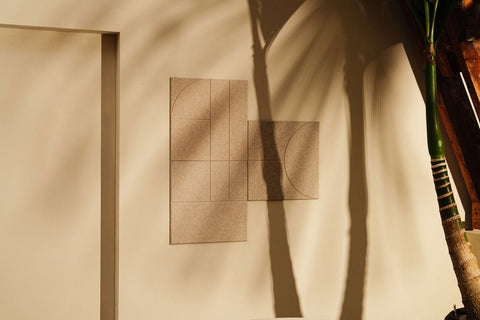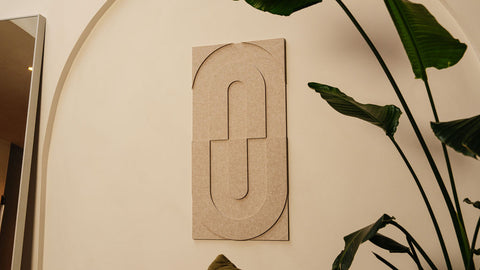How do PET felt acoustic wall panels work to absorb sound?
Sound problems, such as reverberation and distracting background noise, can significantly affect the atmosphere and functionality of a room. PET felt acoustic wall panels offer a stylish and effective solution to absorb sound and create a comfortable acoustic environment. But how exactly does this work? In this blog, we explain how PET felt absorbs sound and why these panels are a smart choice for various interiors.
What is PET felt?
PET felt is a durable material made from recycled PET bottles. Through a process of heating and compression, the plastic fibers are transformed into a sturdy and flexible felt with excellent acoustic properties. These fibers are porous. These small pores/holes absorb sound. It is not reflected back more or less. This material is not only environmentally friendly, but also lightweight, easy to install and available in a variety of colors and designs. Whether you like Japandi or other interior styles, there is a color for every style.
The science behind sound absorption
Sound travels in the form of waves transmitted through air or other materials. When these sound waves reflect against hard surfaces, such as concrete, glass or metal, reverberation occurs. This can create unpleasant acoustics in rooms such as offices, restaurants or living rooms. But also in cafes, restaurants, gymnasiums and gyms.
PET felt acoustic wall panels work on the basis of three acoustic principles:
-
Sound absorption
- The open structure of PET felt ensures that sound waves are not reflected back, but penetrate into the material reducing noise.
-
Sound diffusion
- In addition to absorption, the structures of the felt panels help disperse and refract sound waves, creating a balanced and comfortable acoustic environment.
-
Damping of reverberation
- Installing PET felt panels in strategic places, such as walls and ceilings, reduces reverberation and makes the sound in the room more pleasant.
Why are PET felt panels so effective?
PET felt has several properties that contribute to the effectiveness of sound absorption:
✔ Dense but breathable structure
The fibers of PET felt are tightly compressed, but at the same time contain small openings that absorb rather than reflect sound waves.
✔ Variable thicknesses for different frequencies
Thicker PET felt panels absorb a wider spectrum of sound waves, including low frequencies (such as deep voices and bass sounds), while thinner panels are effective at absorbing high tones (such as talking and the clinking of dishes).
✔ Flexible and modular
PET felt panels can be combined in different sizes and shapes depending on the acoustic needs of a room. Do you choose to mount the panels side by side or at an angle? So you can place them horizontally, vertically or diagonally.
✔ S ustainable and environmentally friendly
Because these panels are largely made of recycled plastic, they are a more sustainable alternative to traditional sound absorbing materials such as foam or mineral wool.
✔ S uitable for any room
Acoustic panels can be used practically anywhere. Where do you spend a lot of time and are affected by noise? We apply these panels not only at home in the living room or bedroom, but also in waiting rooms of the dentist or doctor, for example, but also in offices. Think of the meeting room or the workplace itself.
Would you like to experience the acoustic tiles for yourself? Then stop by our showroom in Zaandam at Loods5 or the Woonindustrie in Nieuwegein!


